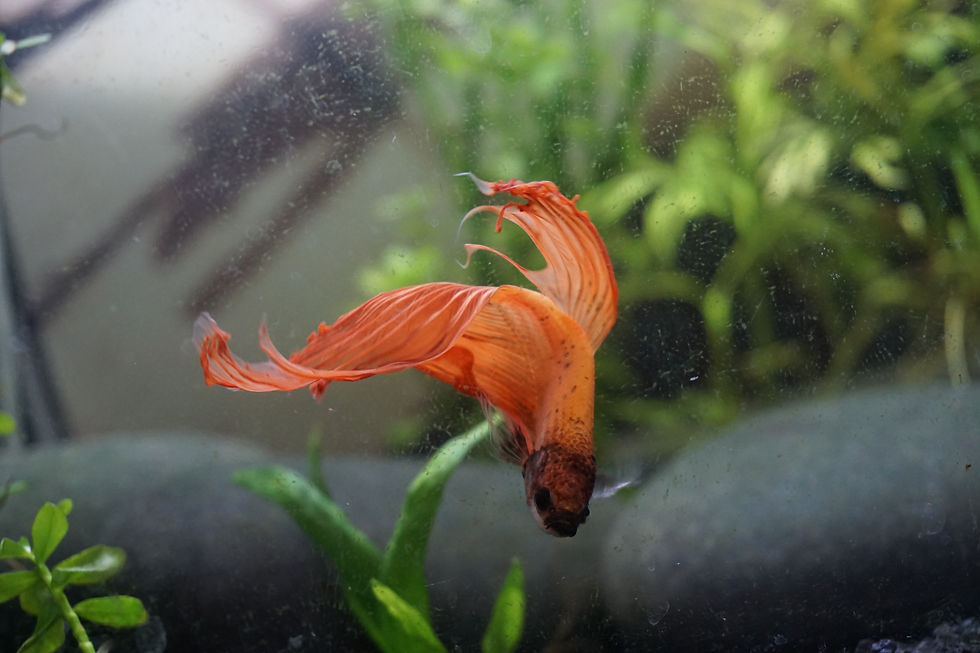Establishing a Fish-In Nitrogen Cycle
- Betta Buddies

- May 4, 2019
- 2 min read
The nitrogen cycle is one of the most important aspects of any fish tank, and it is vital to the well-being of fish and other aquatic creatures. The exact process and importance of the Nitrogen Cycle is outlined more in our article "Establishing the Nitrogen Cycle." But what if the cycle crashes? Or maybe you purchased fish before knowing about it, and now are stuck with an uncycled tank? Don't worry, you can still establish a cycle! You just have to go about it a slightly different way. The safest and fastest way to do a fish-in cycle is by using SeaChem Prime and SeaChem Stablilty, dosing with the Prime every 48 hours to detoxify harmful chemicals and dosing with the Stability every 24 hours to establish the beneficial bacteria. But what if you don't have those products? No need to worry, there is still another way to establish a nitrogen cycle in a tank populated with fish. Establishing a nitrogen cycle of any kind requires a water testing kit, but for a fish-in cycle, the need is doubled. Keeping ammonia and nitrites below 1ppm is necessary for maintaining fish health during a fish in cycle, and the only way to test water for such chemicals is by using a water testing kit. Once a testing kit is acquired, one can begin the fish-in cycle. The first stage of the cycle is to test daily for ammonia levels. Ammonia levels typically begin to rise on the third day of an aquarium being inhabited, but depending on how stocked your aquarium is, it may take longer or shorter. The ideal ammonia reading when doing a fish in cycle is around .25-.50ppm, anything above that, and a water change is needed to bring the levels down. Keeping the ammonia at that measurement will allow the cycle to begin, while minimizing the damage done to your fish. When the ammonia begins turning into nitrites, the same must be done for the nitrites. Test daily, and when parameters exceed .50ppm, conduct a water change to bring the levels down. Just like with ammonia, keeping nitrite levels low will minimize the harm done to your fish, while still allowing the cycle to move forward. When nitrate begins to appear, the cycle is nearly complete! Keep monitoring and lowering ammonia and nitrite levels. Eventually, the ammonia will stop appearing, then the nitrite, and all you will have is nitrate readings. That is when the tank is fully cycled! While a fish-in cycle is possible, it is never recommended to complete one purposefully. Even a fish-in cycle done with extreme care and caution can cause needless harm to the fish, and unless it is ABSOLUTELY NECESSARY, a fish in cycle should be avoided by cycling a tank before obtaining any fish.

Comments